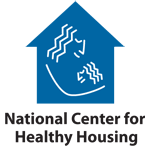|
|
Health & Safety
We do not strictly control Google ad content. If you believe any Google ad is inappropriate, please email us directly here.
Sort results by: Date Added | Alphabetically - With energy prices skyrocketing and the temperature continuing to spike, most homeowners dread receiving their energy bill in the height of summer. But what most homeowners don’t realize is that they could own a high performance home that requires much less energy.
- EPA's Energy Star program now addresses indoor air quality (IAQ). Here is a summary of requirements you can use to improve your home's IAQ.
- Biomonitoring, the measurement of chemicals in blood, urine, and other tissues or fluids, is becoming an increasingly common tool in the study of human exposure to environmental chemicals; the problem is, it's hard to connect with health outcomes (abstract only).
- EPA advises caution with pesticides used for bed bug infestations and suggests non-chemical methods to eliminate and prevent bed bugs.
- Searchable databases on chemical toxicity and exposure data are now available for scientists and the public.
- January is national Radon Action Month and the U. S. Environmental Protection Agency encourages everyone to test their homes for radon.
- Revealing inert ingredients will help consumers make informed decisions and will better protect public health and the environment.
- NSF works with DfE to help consumers identify products that are safer for the environment and their health.
- EPA allows safer products to carry the Design for the Environment (DfE) label. This mark allows consumers to quickly identify and choose products that can help protect the environment and are safer for families.
- These natural plant extracts have many applications, but use with caution.
- A historic water filter grows more popular in modern times.
- Determine which fruits and vegetables have the most pesticide residues and are the most important to buy organic.
- How HEPA filters work on a vacuum cleaner, and how to be a smart shopper.
- It's Louisiana’s first LEED-certified home, as well as the first “Extreme Makeover” home to be certified green.
- Radon is the number one cause of lung cancer among non-smokers.
- Healthy Homes are often equipped with Carbon Monoxide (CO) sensors to detect indoor air quality issues related to fuel-burning appliances. Below is information on why you may want to consider also having a NOx filter in tandem with your CO sensor.
- Tips for safer fiberglass handling and insulation practices.
- Air filters can definitely improve the air quality in your house, but the big questions are “How much?” and “Is it enough?”
- Your better attitude will not allow you to miss all of the other aspects of life that are still available to you.
- What type of fire extinguisher is right for your home? Lynn Bower explains which extinguishers are right for the three basic fire classifications.
We do not strictly control Google ad content. If you believe any Google ad is inappropriate, please email us directly here.



Information provided by The Healthy House Institute is designed to support,
not to replace the relationship between patient/physician or other qualified
healthcare provider.
Education Partners
Ads, ad links, products and content on this page are not necessarily endorsed by these organizations.
|

We do not strictly control Google ad content. If you believe any Google ad is inappropriate, please email us directly here.
|








